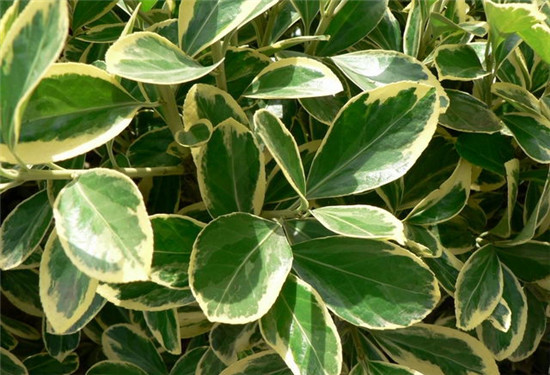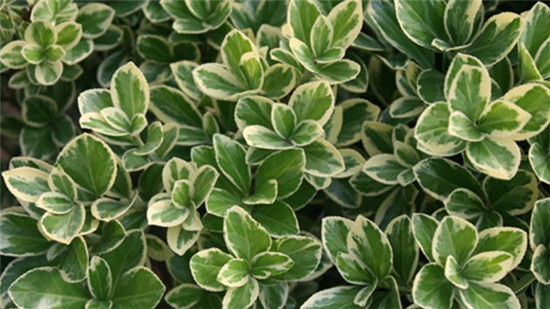Maintenance of Populus tomentosa in Phnom Penh
Populus tomentosa is an indispensable plant in landscaping, but do you know it? Want to know his planting and maintenance? Let's go and have a look.

Phnom Penh Euonymus is one of the varieties of Euonymus, Euonymaceae and Euonymus. It belongs to evergreen shrubs or small trees with slightly quadrangular branchlets, dense branches and leaves, and a spherical crown. Leaves opposite, Obovate or elliptic, margin with obtuse teeth, surface dark green, glossy.
Populus tomentosa mainly grows in North subtropical deciduous, evergreen broad-leaved mixed forest and middle subtropical evergreen and deciduous broad-leaved forest. Like light, slightly resistant to overcast. Strong adaptability and drought tolerance. Like warmth and withstand the cold. Strong sprouting and branching, resistant to pruning. It is resistant to barren, but it is suitable to grow in fertile, moist slightly acidic soil.
Yellow poplar in Phnom Penh likes a warm and humid environment, has lax requirements on soil, can withstand drought, has strong cold tolerance, and is easy to cultivate. Populus tomentosa is also very resistant to pollution and is very resistant to sulfur dioxide, so it is the first choice for evergreen plants in industrial and mining areas with serious pollution. The main purpose of the landscape is to observe the leaves, the maintenance cost is very low, and the survival rate of transplanting is very high. Generally, the survival rate can reach 97% when properly maintained. Most of the yellow poplars in Phnom Penh are propagated by cuttings, and they can take root 30 days after planting.

Culture of Populus tomentosa in Phnom Penh
1. Lay the sand bed with good water permeability and disinfect the sand bed with potassium permanganate or carbendazim two days in advance. Prepare alcohol and plant rooting powder and mix the solution according to the instructions.
2. Do not choose too tender shoots when cutting cuttings. Those with a high degree of Lignification are easy to take root and sprout. Leave the trunk to cut the side branches when pruning, and leave the "root" of at least one bud after pruning for the next pruning.
3. Remove the lower leaves of the cuttings and leave 3 to 4 leaves in the upper part. After the cuttings are repaired, they are soaked in rooting water. Draw a trench with a small shovel on the sand bed, press 5 to 10 centimeters into the cuttings, cover the soil and press it tightly. The line spacing is 10 to 20 centimeters.
4. The planting process needs to maintain appropriate temperature and humidity, watering should be based on temperature and humidity, and keep the leaves moist all the time. Do not overwater, prolong the rooting time, seedlings can reduce watering appropriately after rooting.
5. It usually takes root about 30 days after insertion, and it can also be bowled at the right time. Bowled nutritious soil can be prepared with sand, soil and peat soil, each accounting for 1/3, to facilitate ventilation, do not fill the bowl too full.

Main Diseases and insect pests of Populus tomentosa and their Control
Yellow poplar silk leaf borer
The larvae spin silk to connect the surrounding leaves and twigs as temporary nests, and then feed on them. In serious cases, the leaves are eaten up, resulting in the death of seedlings.
Morphological features: adult body wings are gray-white, the front, outer and posterior edges of the wings are purplish brown with wide frequency, and there are two white spots on the purplish brown belt on the leading edge, the scales are shiny and fuchsia shines. The head of the larva is black, the carcass is yellowish green, the topline, subtopline and valve line are dark green to dark green, and the valve line is orange.
Occurrence regularity: 2 to 3 generations a year in the northern region, overwintering with larvae forming thin cocoons in the bud, adults dormant during the day and out at night, with phototaxis.

Prevention and control methods: (1) artificial killing: in the adult oviposition period, combined with seedling pruning, removal of egg blocks, buds, concentrated burning. (2) using black light to trap and kill in the adult stage. (3) when the larva damage is serious, spray 50% fenitrothion emulsion 1000 times, or 4.5% cypermethrin 2000 times; Bt emulsion 500x spray (note: Bt emulsion is strictly forbidden to be used at the same time with fungicides, the effect is better after 4: 00 p.m. on cloudy days).
The above is all the contents of the conservation of yellow poplar in Phnom Penh that I summarize for you. I hope this article can help you. Please continue to follow us.
Related
- Wuhan Hospital Iron Tree Blooming Result Was Instantly Frightened by the Gardener Master
- Which variety of camellia is the most fragrant and best? Which one do you like best?
- What is the small blue coat, the breeding methods and matters needing attention of the succulent plant
- Dormancy time and maintenance management of succulent plants during dormancy
- Minas succulent how to raise, Minas succulent plant pictures
- What are the varieties of winter succulent plants
- How to raise succulent plants in twelve rolls? let's take a look at some experience of breeding twelve rolls.
- Attention should be paid to water control for succulent plants during dormant period (winter and summer)
- Watering experience of twelve rolls of succulent plants
- Techniques for fertilizing succulent plants. An article will let you know how to fertilize succulent plants.



